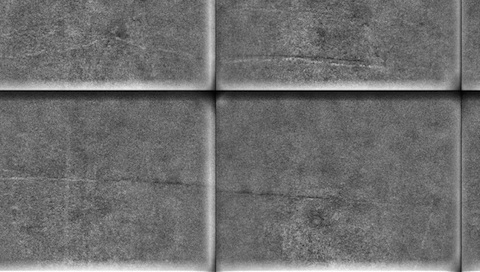
A close-up photograph of a crack inside the Delaware Aqueduct under the hamlet of Roseton in Ulster County. Photo provided by the NYC DEP.
On Friday, the DEP told the world that it is planning an enormous public works project to repair the leaking Delaware Aqueduct that has so sog-ified the towns of Wawarsing in Ulster County and Newburgh in Orange County.
The announcement was made by the New York City Department of Environmental Protection chief, Cas Holloway, at a public meeting in Wawarsing, with the aid of a detailed PowerPoint presentation. The DEP kindly gave us a copy of some of the slides of that PowerPoint presentation, which we've posted below.
Some of the goodies that Holloway showed his Wawarsing audience were photos of the leaky inside of the aqueduct tunnel, which were taken by an "Automated Underwater Vehicle" -- ie, unmanned submarine -- that the DEP sent through the pipe earlier this year.
The photos the AUV took are segmented 360-degree photographs that picture an entire circular slice of the tunnel at once, so they look a little odd at first. But take a closer look, especially at the photos of the Roseton section of the tunnel, and you'll see what those troublesome cracks look like. A close-up shot of a Roseton crack appears at the top of this post.
Below is a photo of the Wawarsing section of the tunnel, which, it must be said, doesn't have any particularly obvious chasms in it -- which might be why the DEP is content to repair it with shots of reinforced concrete, rather than build an entirely new tunnel around it.
 Wall of the Delaware Aqueduct under Wawarsing: Photo provided by the NYC DEP.
Wall of the Delaware Aqueduct under Wawarsing: Photo provided by the NYC DEP.
The New York Times is also covering the story. In an article on Friday, it quoted various local upstate officials about the DEP's plan:
In a statement on Friday, the Ulster County administrator, Michael P. Hein, called the plan “a real and substantive solution.”
“In light of the hardships being encountered by the residents of Wawarsing, time is clearly of the essence,” he said, adding that the bypass “will not only eliminate the problem for the residents of Wawarsing, it will have profound economic benefit to our area through job creation.”
Paul Gallay, executive director of Riverkeeper, said the plan was a sensible approach. “It’s a big investment in solving a big problem,” he said, adding that the city should also move to compensate homeowners affected by the leaks for damages suffered.














